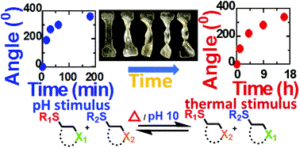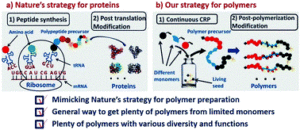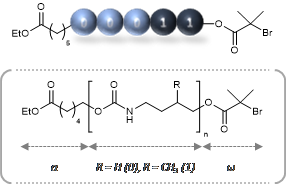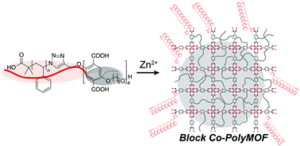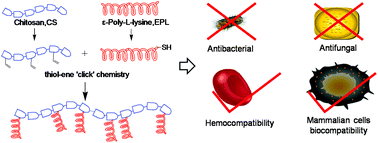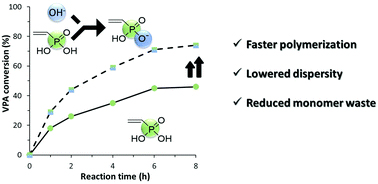 Polymeric amphiphiles can find use in a wide range of applications including detergents, catalysts and drug delivery vehicles. However, new polymeric biocompatible micelles with increased stability, loading efficiency and degradability are still required to address related challenges in the drug delivery field. To this end, Kim and co-workers designed and synthesized a novel epoxide monomer namely tetrahydropyranyl glycidyl ether (TGE). A series of amphiphilic diblock co-polymers were subsequently synthesized with PTGE consisting of a hydrophobic pH-responsive block with poly ethylene glycol (PEG) being the hydrophilic part. These PEG-b-PTGE diblock copolymers showed superior stability in biological media, higher loading capacity, tunable release and controllable degradation when compared to the acrylic analogue 1-ethoxyethyl glycidyl ether (EEGE). The enhanced stability and tunability of the PTGE block were attributed to the increased hydrophophicity and the tight association between the chair conformations of the cyclic TGE side chains. All diblock copolymers exhibited low dispersity values and controlled molecular weights. The high stability of these micelles in combination with their high biocompatibility highlight their potential to be used in drug delivery. In summary, the developed new class of monomers and polymers will contribute to the advanced of polyethers as promising candidates for biomedical applications and beyond.
Polymeric amphiphiles can find use in a wide range of applications including detergents, catalysts and drug delivery vehicles. However, new polymeric biocompatible micelles with increased stability, loading efficiency and degradability are still required to address related challenges in the drug delivery field. To this end, Kim and co-workers designed and synthesized a novel epoxide monomer namely tetrahydropyranyl glycidyl ether (TGE). A series of amphiphilic diblock co-polymers were subsequently synthesized with PTGE consisting of a hydrophobic pH-responsive block with poly ethylene glycol (PEG) being the hydrophilic part. These PEG-b-PTGE diblock copolymers showed superior stability in biological media, higher loading capacity, tunable release and controllable degradation when compared to the acrylic analogue 1-ethoxyethyl glycidyl ether (EEGE). The enhanced stability and tunability of the PTGE block were attributed to the increased hydrophophicity and the tight association between the chair conformations of the cyclic TGE side chains. All diblock copolymers exhibited low dispersity values and controlled molecular weights. The high stability of these micelles in combination with their high biocompatibility highlight their potential to be used in drug delivery. In summary, the developed new class of monomers and polymers will contribute to the advanced of polyethers as promising candidates for biomedical applications and beyond.
Tips/comments directly from the authors:
-
The synthesis of the TGE monomer is a very simple, one-step procedure, but the moisture should be strictly controlled during the synthesis. The residual water can result in byproduct, thus lowering the yield after purification.
-
The polymerization using organic superbase t-BuP4 is a very simple and reliable method; however, the t-BuP4 must be handled and stored carefully by removing the moisture. Otherwise, it may cause a lower degree of polymerization than targeted one and self-initiation process. Thus, any source for moisture should be carefully removed in solvent, initiator and monomer.
The power of the ring: a pH-responsive hydrophobic epoxide monomer for superior micelle stability, Polym. Chem., 2017, 8, 7119-7132, DOI: 10.1039/c7py01613a
Dr. Athina Anastasaki is a Web Writer for Polymer Chemistry. She is currently a Global Marie Curie Fellow working alongside Professor Craig Hawker at the University of California, Santa Barbara (UCSB). Please visit this site for more information.












